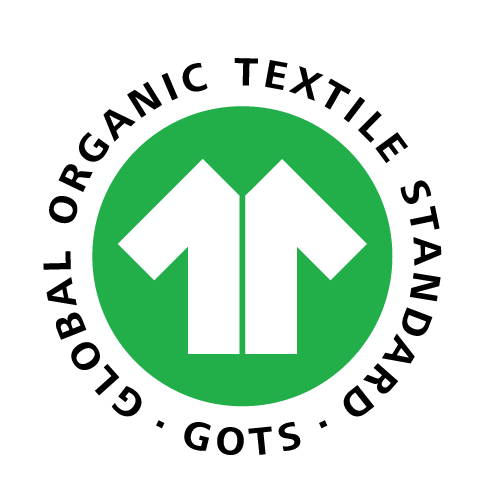When it comes to protecting our health, we often focus on our diet, physical activity, and exposure to harmful substances. However, an area that might be overlooked is their clothing—especially underwear, the first layer that sits closest to our skin. Polyester-rich fabrics, commonly found in underwear, socks, bras, and leggings, may contain Bisphenol A (BPA) and other synthetic additives. Choosing organic cotton underwear for women and men’s boxers briefs is a simple yet effective way to reduce contact with potentially harmful substances while ensuring all-day comfort. In this blog post, we delve into the concerns surrounding BPA and explore the measures we can take to ensure our and our children's safety by reducing BPA exposure in clothing.

Source: cnn.com
What is BPA?
Bisphenol A, also known as BPA, is a chemical compound used in the production of polycarbonate plastics and epoxy resins. It has been widely used in the manufacturing of various consumer products, including plastic containers, food packaging, and even clothing. BPA can be found in everyday items such as water bottles, canned food linings, and certain types of clothing, specifically socks, bras, and other polyester/spandex-rich clothing.
What is the evidence of high levels of BPA in Clothing?
Several studies have found high levels of BPA in everyday clothing. In 2019, a European study found that 9 out of 10 baby socks (aged 0-4 years) contain traces of Bisphenol A and Parabens, chemicals linked to dysfunctions that can trigger illnesses in children and adults.
Since then, the Center for Environmental Health found large clothing brands had up to 19 times the safe limit of these chemicals in their socks.
We had written about BPA in socks before here, but since the recent CNN article citing further evidence of BPA and other chemicals found in sports bras, shirts, and leggings, we have decided to revisit the topic and provide insight into the manufacturing of our products and the choices we make as a family to reduce our BPA exposure in clothing.
The Concerns:
- Endocrine Disruption: BPA is known to be an endocrine disruptor, meaning it can interfere with the hormonal system. Children, with their developing bodies, may be more susceptible to the potential negative effects of BPA exposure. Research suggests that BPA can mimic or interfere with hormones, which may lead to various health issues, including reproductive problems, developmental delays, and behavioral changes.
- Skin Absorption: When BPA is present in the material of socks, there is a possibility of absorption through the skin. Although the skin is a relatively effective barrier, prolonged exposure or damaged skin can increase the absorption rate. Once BPA enters the body, it can circulate and potentially cause adverse effects.
- Oral Exposure: Children, especially toddlers and infants, have a habit of putting their feet in their mouths or chewing on their socks. This behavior poses a risk of oral exposure to any potentially harmful chemicals present in the fabric, including BPA.
How do we minimize the risk of BPA and other chemicals in yours and your children’s clothes?
- Buy clothing made from natural materials: cotton, wool, linen, and hemp as much as possible. The high levels of BPA concentrations were found in clothing made from majority polyester.
- Read the composition on the label and online. If natural materials are less than 50% of the composition, there is a greater risk of chemicals.
- Prioritize basics: bras, socks, underwear, hats, and t-shirts that are close to the skin (for babies, avoid polyester-rich clothing items that may come directly in contact with their mouth, including polyester-rich stuffies, socks, soft toys, bibs, washcloths, and towels).
- Avoid washing polyester-rich clothing with your other clothing items.
- Buy organic whenever possible. Conventional cotton, for example, still contains harmful pesticides and may also be dyed with azo dyes. When choosing to buy organic, look for certifications such as GOTS and Oeko-Tex Standard 100.

Pictured is our Women's underwear packaging
Do Q for Quinn products contain any Polyester?

Pictured is Q for Quinn 98% organic cotton socks (undyed) in kids and adult sizes
We started our journey as a company with socks.
Compared to a t-shirt, certain items are not as straightforward to make in a 100% cotton or other natural material without compromising (sometimes significantly) on durability, fit, and stretch.
Q for Quinn was started by a mom designing a gentle pair of socks for her son who suffered from eczema. She strived to create a pair made from as much natural materials as possible. Our very first composition was an 80% cotton, 18% polyester, and 2% elastane, but since then, we have stretched the boundaries to create a 98% cotton elastane sock. While we still manufacture in the 80% cotton composition (our more patterned socks, which require some polyester plating when knitting), all our products are certified by GOTS and tested for BPA amongst hundreds of other chemicals.
Our underwear contains 95%+ organic materials, with even 100% organic cotton options for children and women. We use a minimal amount of elastane in some of our underwear styles for stretch. All of our underwear is certified organic by GOTS. We are certified by Ecocert Greenlife; Licence #256894.
In conclusion, when it comes to protecting our family's health, it's essential to pay attention to potential hazards in our clothing, such as the presence of Bisphenol A (BPA) in socks. While choosing GOTS certified products are ideal, these are not always accessible to everyone and for every item. Therefore, at the very least we as a family prioritize clothing made form natural materials (cotton, linen, hemp, wool) to minimize our exposure to BPA.










Leave a comment